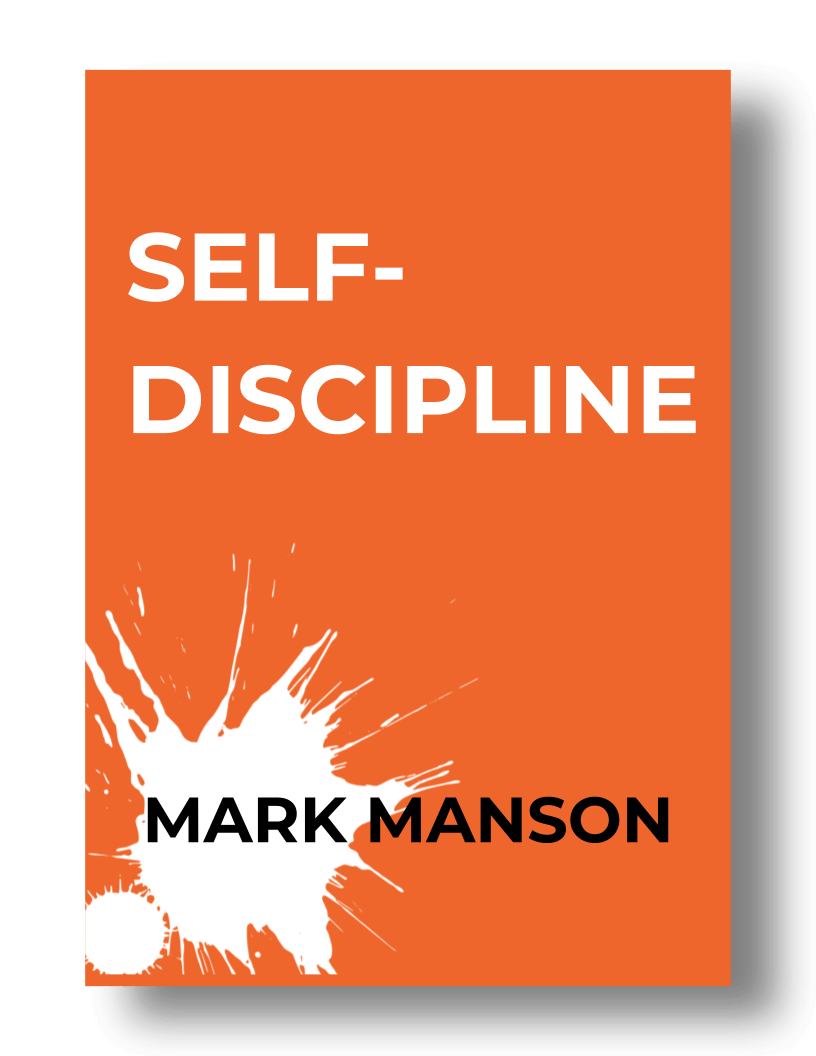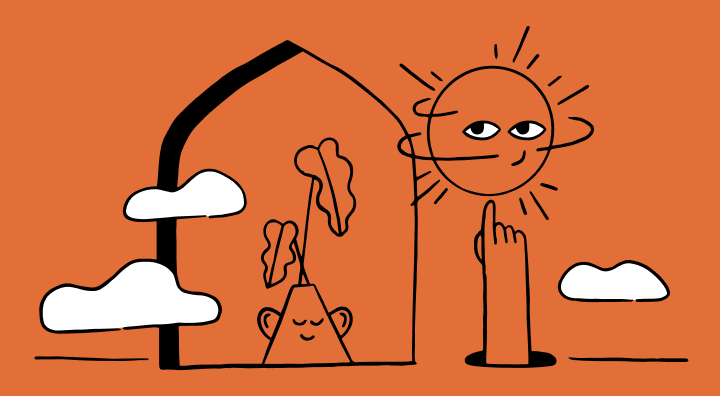How to Conquer Your Biggest Fear
What is your biggest fear? What would it mean if you could overcome that fear, once and for all?
In this article, I’m going to help you do exactly that by teaching you five tactics to conquer anything you might be afraid of. Heights, spiders, small spaces, strangely-shaped clouds—whatever makes your knees turn to water and keeps you up at night.
These five tactics are universal and proven. In fact, last year I used them to help two readers who were afraid of driving overcome their fear over a single weekend, then shared the results on my YouTube channel.
Ready for those five tactics?
Let’s hear them.
1. Exposure Therapy
The core of attacking any fear is something in psychology known as exposure therapy.1
Exposure therapy is exactly what it says. You take something you’re afraid of and gradually expose yourself to it, first in small doses, then in larger doses, until finally you become desensitized to the experience.
If you’re afraid of heights, you don’t want to start at the top of the Eiffel Tower. You want to start on a second-floor balcony and work your way up until it becomes comfortable to stand at the top of the building.
Exposure therapy works because the human mind is an association machine.2 For most of us, our greatest fears are derived from some past traumatic episode or set of experiences.
In the case of my two readers afraid of driving, one survived a car accident when she was young, while the other had internalized her father’s neurotic insistence that she was going to die if she drove too fast.
And these associations had controlled both women ever since.
Exposure therapy helps us associate the experience we’re afraid of with different, more helpful beliefs.3
Not tumbling to your death from a second-floor balcony shows you height doesn’t bring inevitable doom. As for my two readers, I chose a slow drive in a retirement community to weaken their association of driving with horrific crashes.
But—and here’s the problem we run into with exposure therapy—they were still terrified even at 20 miles an hour.
Even though exposure therapy helps us create new, more helpful associations with our fears, it’s inherently stressful and scary because in doing it we’re forced to confront the fears we’ve spent our lives running away from.
To make exposure therapy more palatable, some people practice visualization. Psychologists are known to have their patients visualize their biggest fears and strategize responses to those fears in their mind.
Others go so far as to create VR simulations of the scary activity to mentally prepare for the real-life experience.4
One less discussed method is my next tactic: orthogonal exposure.
Get Your Shit Together — Here’s How
Your information is protected and I never spam, ever. You can view my privacy policy here.

2. Orthogonal Exposure
Orthogonal exposure is basically giving yourself a break from the daunting activity you’re facing, and doing something that is different but highly related instead.
Surprisingly, this can have a lot of success with people’s fears.
Paul Graham, the famous investor, claims that he overcame his fear of flying on airplanes by learning to hang-glide. A friend of mine once told me that he overcame his fear of heights by learning to ski, by standing on top of a steep slope and looking down the mountain.
By attacking related, but different activities to the actual fear, we give ourselves a wider surface area to create new associations and build self-confidence.
As orthogonal exposure for my two fear-stricken drivers, I took them go-cart racing. I hoped that the incentive to beat each other in the race would motivate them to drive faster and push their boundaries.
I guess I should have known that wouldn’t work. Despite my urgings, both women finished dead last. Which brings me to the next tactic…
Before we move on, think about a fear that you have.
- What would your first level of exposure therapy be?
- What would orthogonal exposure look like for your fear?
3. Altitude Training
Eliud Kipchoge is the best marathon runner who has ever lived. In his 20-year career, he has won over 70% of the races he has entered and is the only human who has ever run a sub-two hour marathon.
One thing that’s notable about Kipchoge’s training is that he trains in the mountains of Western Kenya at an altitude of 8,000 feet above sea level.
For people like you and me, this altitude is absolutely crippling. We’d be gasping after a couple laps, but for Kipchoge, this is his standard practice. And when he comes back down to sea level in Berlin or London or Tokyo, he demolishes his competition.
This is known in sports as altitude training,5 and it can work for fears as well.
If you take whatever activity scares you and amplify the difficulty or complexity of that activity, returning to the normal activity afterwards will feel easy by comparison.
At least that’s the theory.
With fear, it’s tricky. Because facing fear operates in a kind of Goldilocks zone. If the activity you’re doing feels too easy, you won’t make any progress. But if the activity feels impossibly hard, then you can become overwhelmed and panic and end up creating more fear for yourself.
So the goal is to find something that is at the very edge of what feels possible, in the Goldilocks zone. Not too easy, but not too hard.
I took the two women to the racetrack and rented some of the fastest streetcars in America. The challenge was to go over 120 miles per hour, more than double the speed people drive at on the freeway. And one of them succeeded.
What’s more, she said she had fun doing it.
4. Make It Fun
Will Smith has a great saying:
The best things in life are on the other side of our fears.
The greater the fear, the greater the joy waiting for you on the other side.
This raises an important question for you and whatever fear you might be struggling with: How can you make it fun?
When you have fun doing something that previously scared you shitless, that’s when you begin to tear down those associations that terrorized you your entire life.
Are you intimidated of dating? Well, how can you make it fun? Can you turn it into a little game for yourself? Do a double date with a friend you enjoy spending time with?
Insecure about your body image, afraid to go to the gym? How do you make it fun? Can you make bets with yourself on how much weight you can lift? Choose a workout where you feel less inhibited? Or go all out and join a pole dancing class?
Return to the fear you’ve been working on.
- What altitude training can you subject yourself to?
- How can you make the whole experience fun?
5. Identity Formation
It’s at this point that we get into the fifth and deepest strategy of conquering fear—identity formation.
I mentioned before that the mind was an association machine. Take the sum total of those associations and you get a person’s identity.
Statements like “I am a writer,” “I like long hikes,” “I’m afraid to drive” are all based on associations.
You have positive associations with some things, so you do them repeatedly. You have negative associations with other things, so you avoid them repeatedly.
These repeated and avoided activities then become your identity.
Prior to their weekend with me, my two readers’ identities were in part shaped by their inability to drive.
So I gave them an experience that would reshape their perspective. I rented a Lamborghini for each of them to drive down the Las Vegas strip.
As they took turns doing so, people kept waving and snapping pictures and calling out to us. That scariest thing that had been so intimidating to them their whole lives, now they were being socially rewarded and validated for it.
They can never say again, “I’ve never enjoyed driving,” because they have.
They can never say again, “I have no good memories in a car,” because they do.
They can never say again, “I’ve never driven on a road trip,” because I didn’t buy return tickets for our Las Vegas weekend. The only way to get home in Los Angeles was to drive.
And they did.
The two women drove from the Las Vegas strip to the beaches of Santa Monica. A drive that’s 294 miles through the desert, various towns, mountains, freeways, and notorious LA traffic. They took turns, had rest stops, and at no point did I touch the wheel.
Any fear can be conquered. It’s a matter of choice, persistence, and a little strategy.
But I haven’t told you what is maybe the most important one yet…
Bonus: Do It With a Friend
That strategy is called friendship.
My two readers had each other. They encouraged each other, they kept each other accountable, while I kept them both accountable.
The biggest asset in conquering any fear is an ally. Someone who can help you tackle your biggest demons. Who can hold you up when you start to fall. Who can lend a helping hand when you need that extra push.
What’s also understated is the commitment that results from tackling your fear with a friend.
My two readers made a commitment to each other. Neither one of them wanted to be the one that bailed. And so by them both being there, they kept each other going.
You can’t half-ass a fear. You have to go all in.
You need to set stakes for yourself and create consequences, and then find the allies and support networks to keep you accountable.
From there, you ramp up gradual exposure. Give yourself a little bit of altitude training and reward yourself for each of the small victories.
My weekend with the two readers was a triumph not because of the road trip home, though that was pretty badass. It was a triumph because we did it together. We created positive memories and showed one another what was possible.
This is what matters most, creating those positive associations. Making those lasting memories. Redefining what is possible.
- Exposure therapy. (2024). In Wikipedia.↵
- Mayes, A., Montaldi, D., & Migo, E. (2007). Associative memory and the medial temporal lobes. Trends in Cognitive Sciences, 11(3), 126–135.↵
- Tryon, W. W. (2005). Possible mechanisms for why desensitization and exposure therapy work. Clinical Psychology Review, 25(1), 67–95.↵
- Rothbaum, B. O., Hodges, L., Smith, S., Lee, J. H., & Price, L. (2000). A controlled study of virtual reality exposure therapy for the fear of flying. Journal of Consulting and Clinical Psychology, 68(6), 1020–1026.↵
- Altitude training. (2023). In Wikipedia.↵
